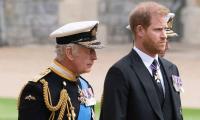It seems like several senior government officials are convinced that Pakistan may avoid an IMF programme altogether. The suspension of talks with the IMF till January 15 certainly indicates the confidence within government that Saudi Arabia, the UAE and China will all do enough to mitigate the tidal wave of a potential dollar denominated payments crisis that PM Imran Khan inherited.
If this government does avoid an IMF programme at this early stage, it will project its diplomacy and economic management as a success, without actually having to engage in a single act of structural or procedural reform. It may have a case.
Let’s be fair: avoiding an IMF programme from the position that the country was in on August 18 would be, unequivocally, a success for the new government – at least to the extent that it would represent a statement of Pakistan’s ability to engage fruitfully with a trusted core of bilateral partners that do not impose inconvenient conditions on how Pakistan manages its financial and fiscal affairs. But for this government to be able to make lemonade from the lemon of having to manage a fiscal crisis, as its first order of business, it must not allow its giddiness at IMF avoidance to cloud its task: a wholesale reform of the fiscal culture of the Islamic Republic of Pakistan. This is a grand aim that has eluded every previous ruling regime in this country, and it will elude PM Khan’s administration too – unless it takes an honest and clear-eyed approach to fixing it.
First, some history. Pakistan has had the opportunity to get its fiscal structure right through the IMF several times. The most recently completed IMF loan in 2016 was the country’s 21st loan facility agreed – across 18 separate programmes. Few countries have been as kind to the IMF and its well-trained monetarist saviours of fiscal dysfunction in exotic places with spicy food.
Second, some reality. This is not the first time that Pakistan has been able to avoid the unpleasantness of a rigorous IMF-dictated reforms programme. Despite having an IMF programme from September 2013 to September 2016, the PML-N government practised a model of economic growth that built up the country’s power and transportation infrastructure at the cost of fiscal and currency instability. Setting aside the debate about the relative importance of infrastructure – nobody argues that Pakistan should damage its economic sustainability to build it.
But the key question for the current government is to learn the key lesson from the 2013-2018 period. Sadly, not pursuing infrastructure is the wrong lesson. To learn the correct lesson, Finance Minister Asad Umar must ask the correct question. That question is rather simple: How did Pakistan manage to throw caution to the wind despite an IMF programme from 2013 onward, and spend, spend, spend, to build, build, build?
The answer is China. China has been, since at least 2013, the financier of choice for Pakistan. Many critics of the China-Pakistan Economic Corridor (CPEC) simply do not know what they are talking about. This includes senior advisers in the current government. Their belief that they have legitimate questions about the terms of Chinese financing for Pakistani power and infrastructure projects is irrational. A debate about the terms of Chinese financing assumes that Pakistan was shopping for cheap project financing in a perfectly competitive market in which money was tripping over itself trying to get into Pakistan and turn profitable tricks for investors and lenders. We know reality was a little different.
A sober reflection on the facts reveals that Pakistan has not enjoyed such a luxury – perhaps ever, but certainly not in the post-1998 era. When Pakistan received President Xi Jinping, in the spring of 2015 (delayed for several months by the undemocratic and fruitless 2014 dharna), it was recovering from nearly seven years of a terrorist insurrection that wreaked havoc on the country’s institutions, its economy and the wider society. It did not help that the PPP-led coalition did nothing to counter the conviction held fiercely by millions of Pakistanis: that they were being governed by a corrupt and callous leadership.
The net outcome of the events and personalities that bequeathed Pakistan to the PML-N in 2013 was an utter lack of confidence in the country’s economy. The recovery of the economy from 2013 to date was informed by, over and above all other factors, the net capital inflows from CPEC. Oil prices, and friendly post-CPEC bond markets did not hurt, but the foundation for the country’s economic growth in 2016-17 and 2017-18 was China.
Asad Umar has inherited an economic situation that resembles the kind of shambles that Ishaq Dar did in 2013. The one big difference is that Dar Sahib was working with a non-growth economy, with a small fiscal crisis. Asad Umar Sahib is working with a growth economy with a relatively large fiscal crisis. The quantum of the current account deficit is unprecedented in the country’s history. Imports (including those associated with CPEC projects) exceed exports by a margin that cannot be bridged in a matter of quarters, maybe not even a matter of years.
All of this matters because it reminds us that Pakistan won’t stop being important to the region and the world. And, whilst this importance should make Pakistanis thankful for a competent government that can engage effectively with key strategic partners like Saudi Arabia, the UAE and especially China, it should also sadden Pakistanis.
For 70 years, Pakistan’s elite have successfully evaded, avoided and dodged structural economic reform that would make Pakistan a self-sufficient country. Why? Because the rest of the world always finds a way to pay Pakistan’s bills. They don’t necessarily do it out of benevolence – but they should not be the targets of our ire. Our ire should be reserved for the elite that leverages Pakistan’s geography and its strengths to perpetually kick the can of reform down the road. IMF, or no IMF, bailouts are nothing to gloat about.
In FY 2017-2018, Pakistan had total expenditures of Rs7.49 trillion. It had a total revenue of Rs5.23 trillion. We already know Pakistan doesn’t have enough revenue. But it is the quality of revenue that should be a cause for concern for PM Khan.
Of the total revenue, Rs4.47 trillion, or about 85 percent is tax revenue. But of this overall tax collection, only 34 percent is from direct taxes. More worryingly, property taxes make up a total of only about Rs5.5 billion or less than 0.13 percent of the total tax revenue of the country. But perhaps most worryingly, almost 40 percent of the total tax revenue is from taxes on goods and services.
Taxing goods and services punishes consumption, and usually does so in a non-progressive manner, dropping an axe across all consumption, rather than targeting just the rich.
In short, the Pakistani elite do not pay their share. Because of the brilliance of Quaid-e-Azam, the courage and resilience of the poor, and the bravery of Pakistani soldiers, the Pakistani elite do not have to pay their share. They tax consumption, subsidise being wealthy, and free ride the permanent geostrategic advantage of being Pakistani.
If PM Khan wants to avoid the humiliation of having to do another Pay Our Bills Please World Tour, he needs to begin to take his job more seriously. Too many decisions in the first 100 days have been subject to the whims of a cabinet that is PML-Q light. These folks have had decades to prove their competence. They don’t have any. To transform the fiscal culture in Pakistan will require PM Khan to climb the container and work hard. But not against his usual targets, or at least not the usual targets alone. He has to go after the Pakistani elite. Does he have it in him?
The writer is an analyst and commentator.
A representational image showing residents walking at a wholesale market in Karachi. — AFP/FileOnce again there is...
A representational image showing late Pakistani human rights activist and Supreme Court lawyer Asma Jahangir. —...
A representational image showing a security personnel sanding guard beside a ship carrying containers at Gwadar port....
A health worker administers polio vaccine drops to a child during a door-to-door polio vaccination campaign in Lahore,...
Armed militants of the banned Tehreek-e-Taliban Pakistan pose for a photograph in Orakzai Agency. —...
An aeroplane of the national flag carrier of Pakistan is seen in this file photo. — AFPWhile Pakistan considers...







